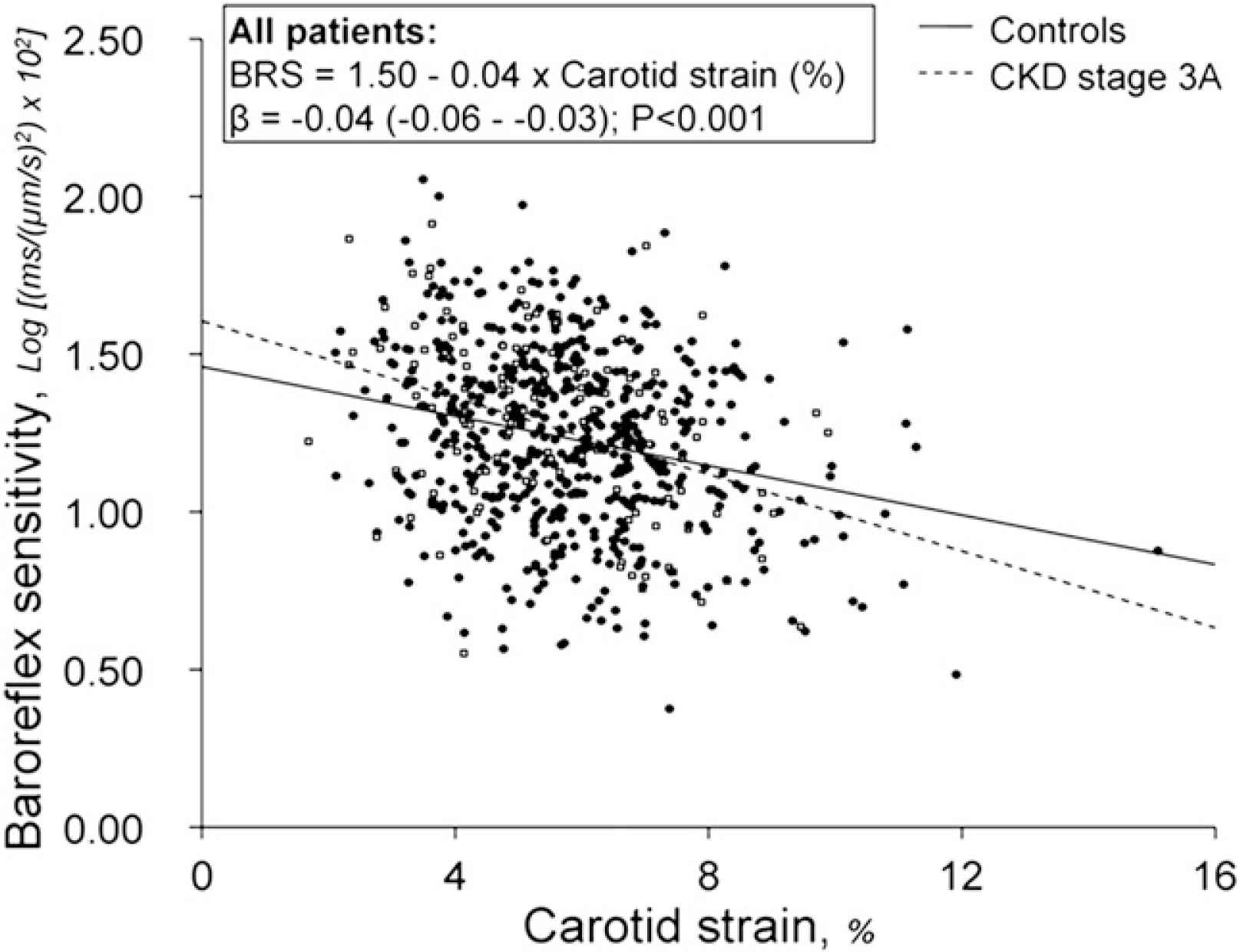P1.07 CAROTID FUNCTION AND BARORECEPTOR SENSITIVITY IN MODERATE CHRONIC KIDNEY DISEASE: THE EPP3 STUDY
- DOI
- 10.1016/j.artres.2011.10.013How to use a DOI?
- Open Access
- This is an open access article distributed under the CC BY-NC license.
Introduction: Short-term variation of blood pressure (BP) is largely controlled by autonomic function though the baroreflex. Carotid distension rate was recently introduced instead of BP to evaluate the carotid function and neural component of the baroreflex in small populations. Autonomic dysfunction and arterial stiffness occurs in patients with severe chronic kidney disease (CKD) but little is known in moderate CKD.
Aims: To study the baroreflex and to analyse the link with the carotid function in moderate CKD.
Methods: From the EPP3 cohort, 123 patients with moderate CKD (Stage 3A) and 615 controls with GFR≥60ml/min1.73m2, matched for age, gender and body surface area were enrolled (age 64±6 years). Carotid measurements were performed by a high-resolution echotracking device. Spontaneous BRS was calculated with the fast Fourier transform of carotid distension rate and R-R interval in the low-frequency (LF) range (0.04–0.15 Hz).
Results: Internal diastolic diameter, intima-media thickness, circumferential wall stress, carotid pulse pressure, R-R interval and BRS were comparable between the two groups. Carotid strain and distensibility were significantly reduced, elastic incremental modulus and carotid stiffness were significantly increased in CKD.
Neural baroreflex appeared very sensitive to vascular component since carotid strain was the strongest determinants of BRS in both groups (Fig-1). The explained BRS variability was higher in patients with CKD (R2=0.31) than in controls (R2=0.14).
Conclusions: In moderate CKD we detected carotid dysfunction and no changes in neural baroreflex. The role of carotid strain, as a determinant of neural baroreflex, is confirmed in moderate CKD and in controls.

Cite this article
TY - JOUR AU - L. Zanoli AU - M. Alivon AU - N. Estrugo AU - G. Ecriou AU - H. Ketthab AU - J.F. Pruny AU - P. Castellino AU - S. Yanes AU - D. Laude AU - K. Bean AU - F. Thomas AU - J.P. Empana AU - X. Jouven AU - S. Laurent AU - P. Boutouyrie PY - 2011 DA - 2011/11/29 TI - P1.07 CAROTID FUNCTION AND BARORECEPTOR SENSITIVITY IN MODERATE CHRONIC KIDNEY DISEASE: THE EPP3 STUDY JO - Artery Research SP - 150 EP - 150 VL - 5 IS - 4 SN - 1876-4401 UR - https://doi.org/10.1016/j.artres.2011.10.013 DO - 10.1016/j.artres.2011.10.013 ID - Zanoli2011 ER -
